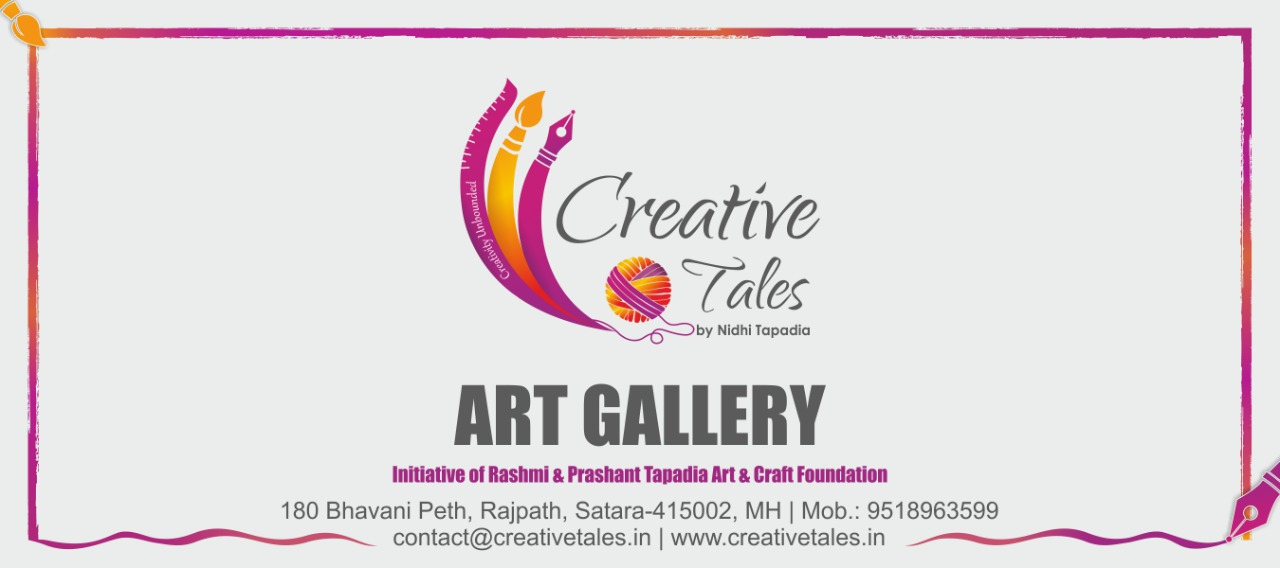|
|
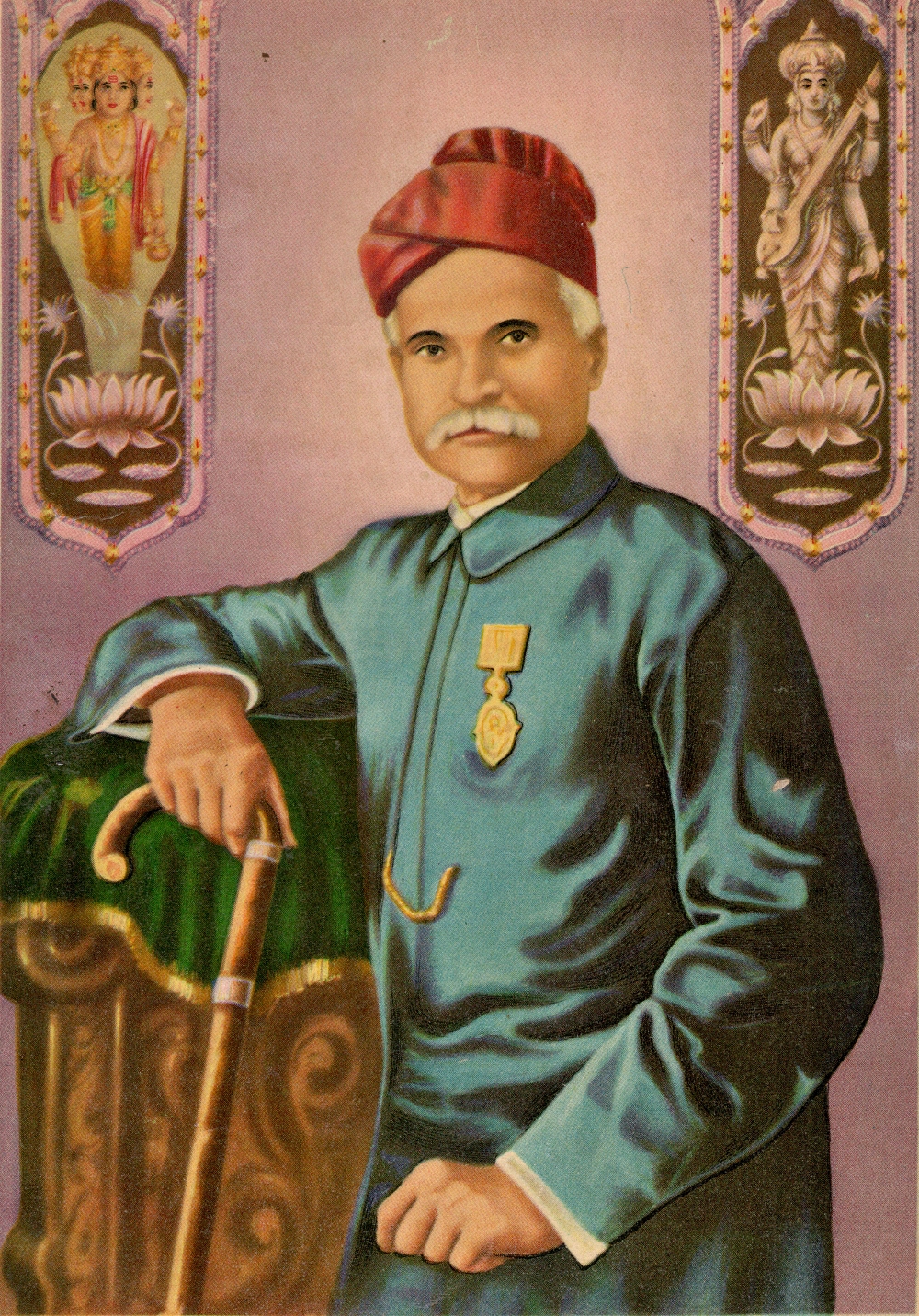 |
Raja
Ravi Varma was an
Indian painter and artist, considered as one of
the greatest painters in the history of Indian
art. He is known for his amazing paintings,
which revolve mainly around the Puranas and the
great Indian epics, Mahabharata and Ramayana.
Ravi Varma is one of the few painters who
managed to accomplish a beautiful union of
Indian tradition with the techniques of European
academic art. This is one of the reasons why he
is considered as one of the most, if not the
most prominent Indian painters. Varma was also
responsible in taking the Indian art all over
the world with his impeccable technique. While
the Europeans and other art lovers admired his
technique, the laymen of India enjoyed his work
for its simplicity. More often than not, Varma’s
paintings highlighted the beauty of South Indian
women which were admired by all. His portrayal
of Hindu gods and goddesses went on to become
worship material for many people belonging to
the lower castes. Back then, these people were
often forbidden from entering temples and thus
they celebrated Varma's works, for they gave
them an idea of how the deities looked inside
the temple. He also managed to improve the
artistic knowledge and spread the importance of
art among Indian people. He achieved this by
making affordable lithographs, which were
accessible even to the poor. Alternatively, this
also made him a household name and Raja Ravi
Varma soon captured the hearts of all.
Recognizing his feat, Viceroy Lord Curzon
honored him with the Kaisar-i-Hind Gold Medal
for his service in the furtherance of public
interest. |
|
EXHIBITION OF RARE OLEOGRAPHS OF RAJA RAVI VARMA |
| |
|
 |
Oleograph,
also called chromolithograph or chromo,
colour lithograph produced
by preparing a separate stone by hand for each
colour to be used and printing one
colour in register over another. The term is
most often used in reference to commercial
prints. Sometimes as many as 30 stones were used
for a single print.
The technique was pioneered in the 1830s but
came into wide commercial use only in the 1860s.
It was the most popular method of colour
reproduction until the end of the 19th century,
when more efficient techniques rendered it obsolete. |
|
|
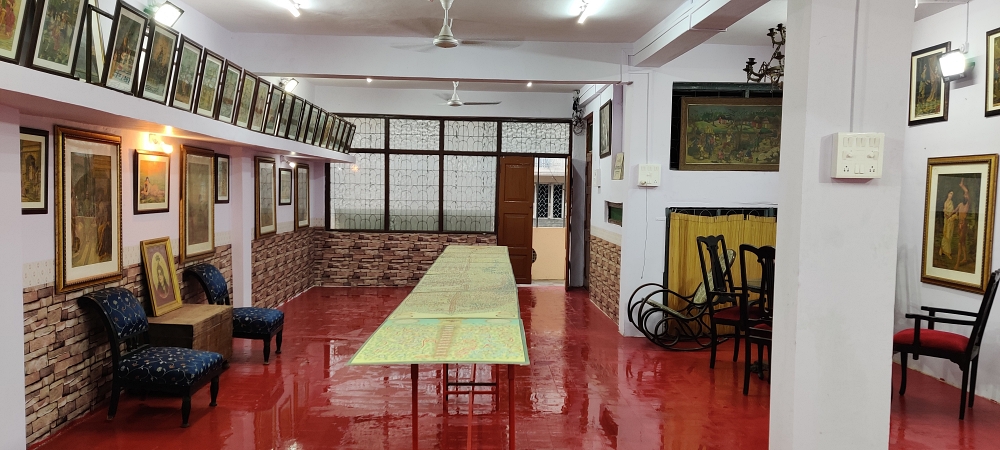 |
|
|
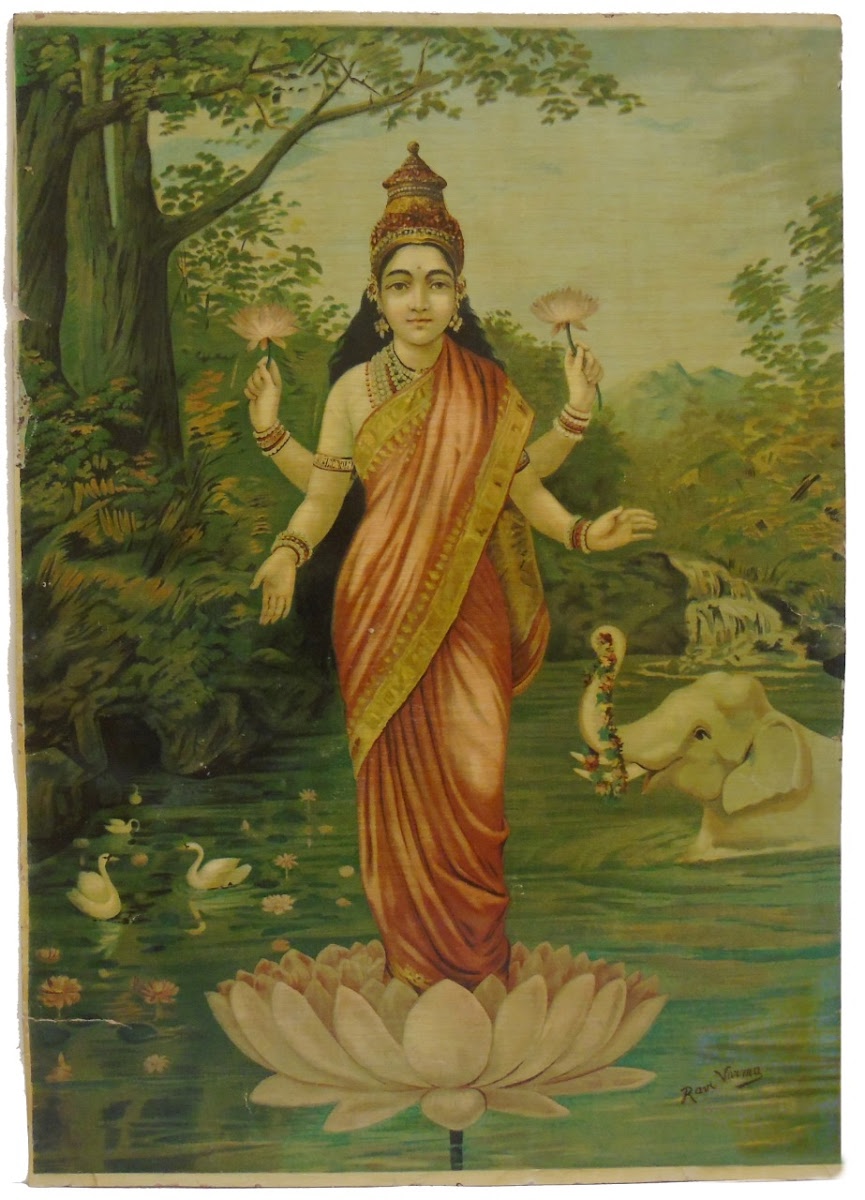 |
SHRI LAXMI
Laxmi, the Goddess of Wealth, is the consort of
Vishnu. She is said to have sprung up from a
lotus, and is represented as one of the fourteen
jewels churned out of the ocean by Devas and
Asuras in a mighty churning competition. |
|
SARASWATI
Saraswati is the goddess of Learning and Music.
The peacock is not only her favourite bird but
also the one she always rides on. In the above
picture, she is sitting on a rock in woodland
scenery and is playing soft music on the Sitar. |
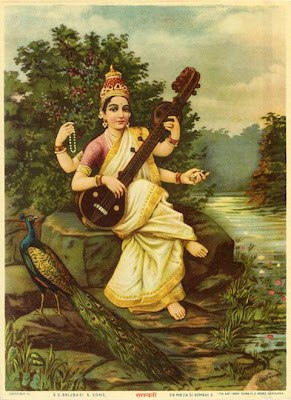 |
|
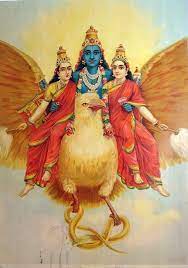 |
VISHNU RIDING ON
THE EAGLE
Vishnu, the
principal God of the Hindu trinity, is believed
to have the eagle as his favourite
transportation. In the above picture, he is seen
riding on the eagle with two celestial damsels. |
|
VISHWAMITRA
AND MENAKA
The above picture
represents Vishwamitra and Menaka. The former
was a Rishi practicing great austerities, and
the latter a celestial beauty ordered by Indra
to rule Vishwamitra into sin. The image depicts
the manner in which Menaka uses her charm to
attract the attention of the great devotee who
finally fell prey to her seduction. |
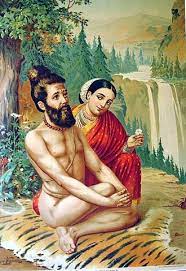 |
|
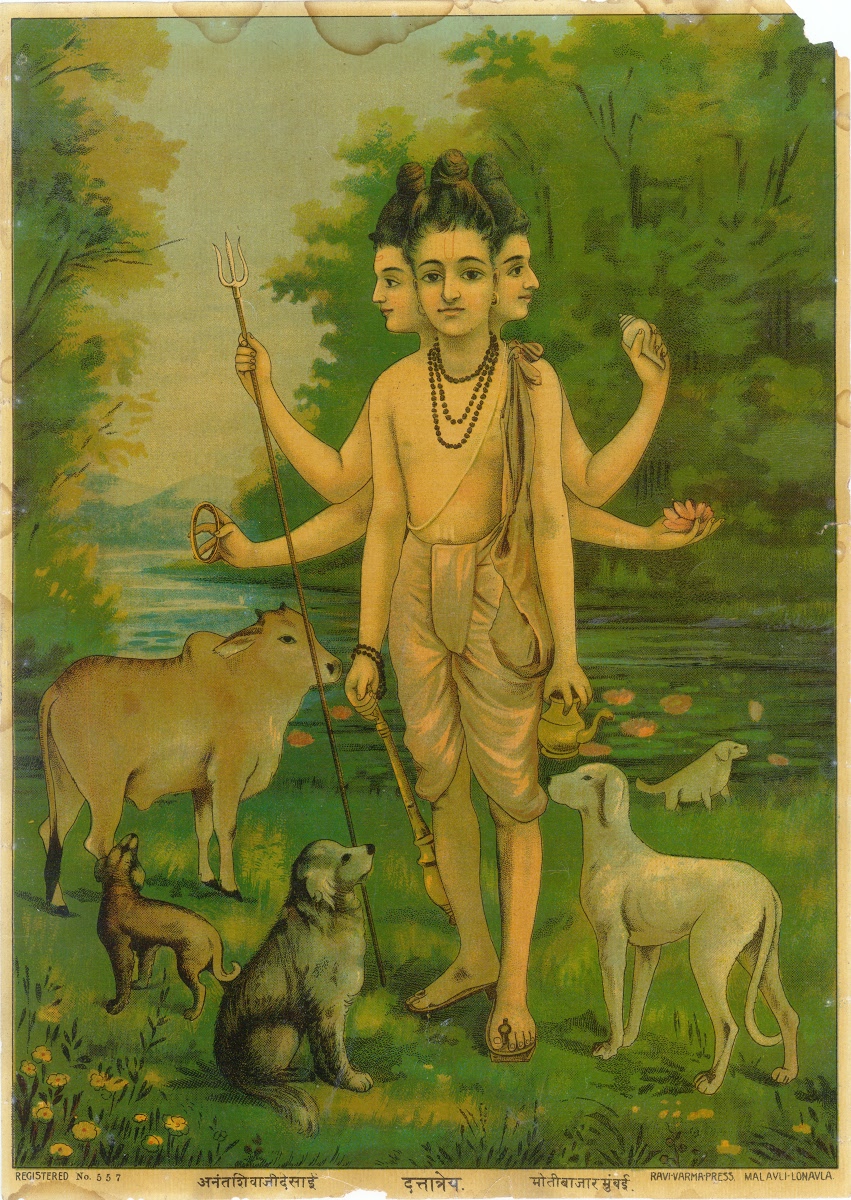 |
SHRI DATTATRAYA
Hindus believe in a trinity of God-heads.
Dattatray is popularly believed to be the
unification of the three chief Gods: Brahma,
Vishnu, and Mahesh. Therefore, he is always
painted having three heads and six arms. |
|
THE MEETING OF HARI HARA
Hari(Vishnu) on his elephant and Hara(Shiva) on
his riding bullock, meeting each other. |
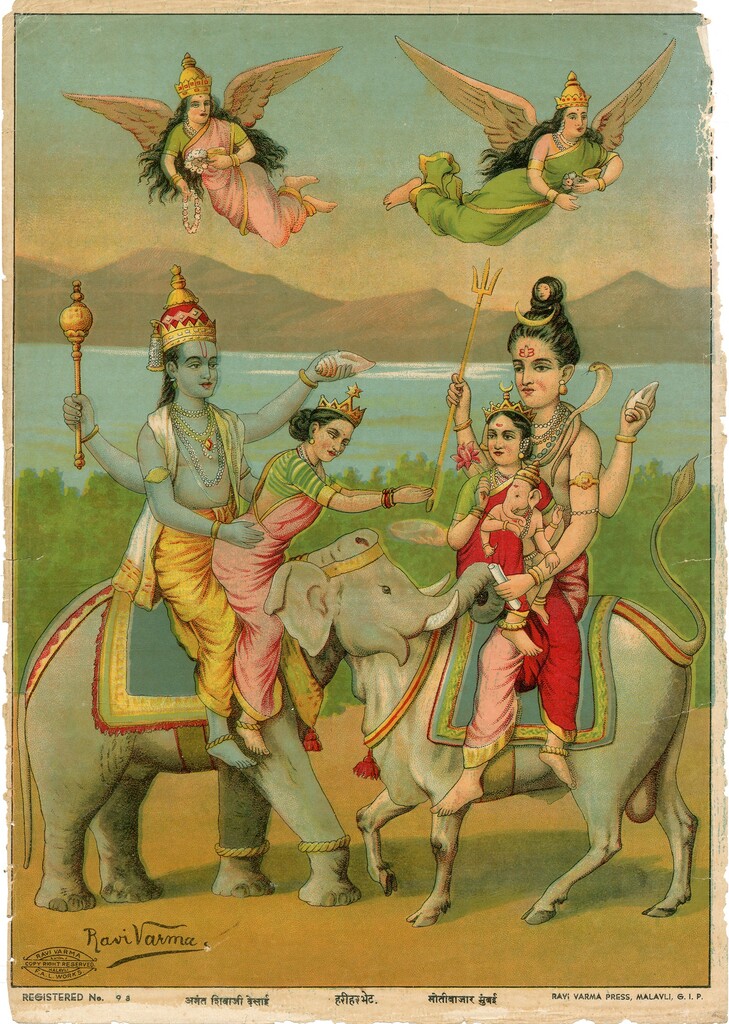 |
|
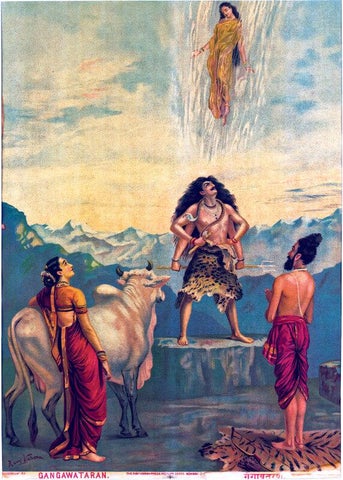 |
THE DESCENT OF THE GANGES
River Ganga was originally a dweller of the
heavens. Bhagiratha wanted to bring holy waters
down to purify his ancestors who were undergoing
great torment for their past sins. As a reward
for his great penance and asceticism, Ganga
agreed to come down to Earth. However, it was
feared her mighty waters would crush the. To
prevent such a catastrophe, Bhagiratha called
for the help of Shankara. Shankara agreed to
bear the falling water on his head and shoulders
and thus break the force of its downward fall.
In the above picture, Shankara is shown standing
tall, with his head thrown back and his chest
expanded, ready to receive the torrent of
falling waters. Bhagiratha and Parvati, the wife
of Shankara, are watching the event with
apprehension. Nandi, Shankara’s favourite bull ,
is also watching the scene. |
|
MOHINI
When the Gods and the Asuras churned the ocean,
they produced both nectar and a deadly poison.
The Asuras being the more powerful group of the
two, took the nectar for themselves. However,
Vishnu assumed the disguise of Mohini(a lovely
woman) and pretented to serve the nectar in due
proportion to all. The Asuras were enchanted by
the beauty and attractiveness of Mohini unaware
of the secret plot. She served all the nectar to
the Gods and it was too late when the demons
found out that they had been deceived. Here,
Mohini is shown enjoying the free movement of a
garden swing. |
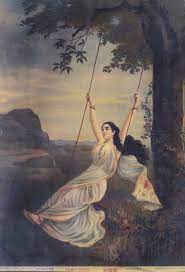 |
|
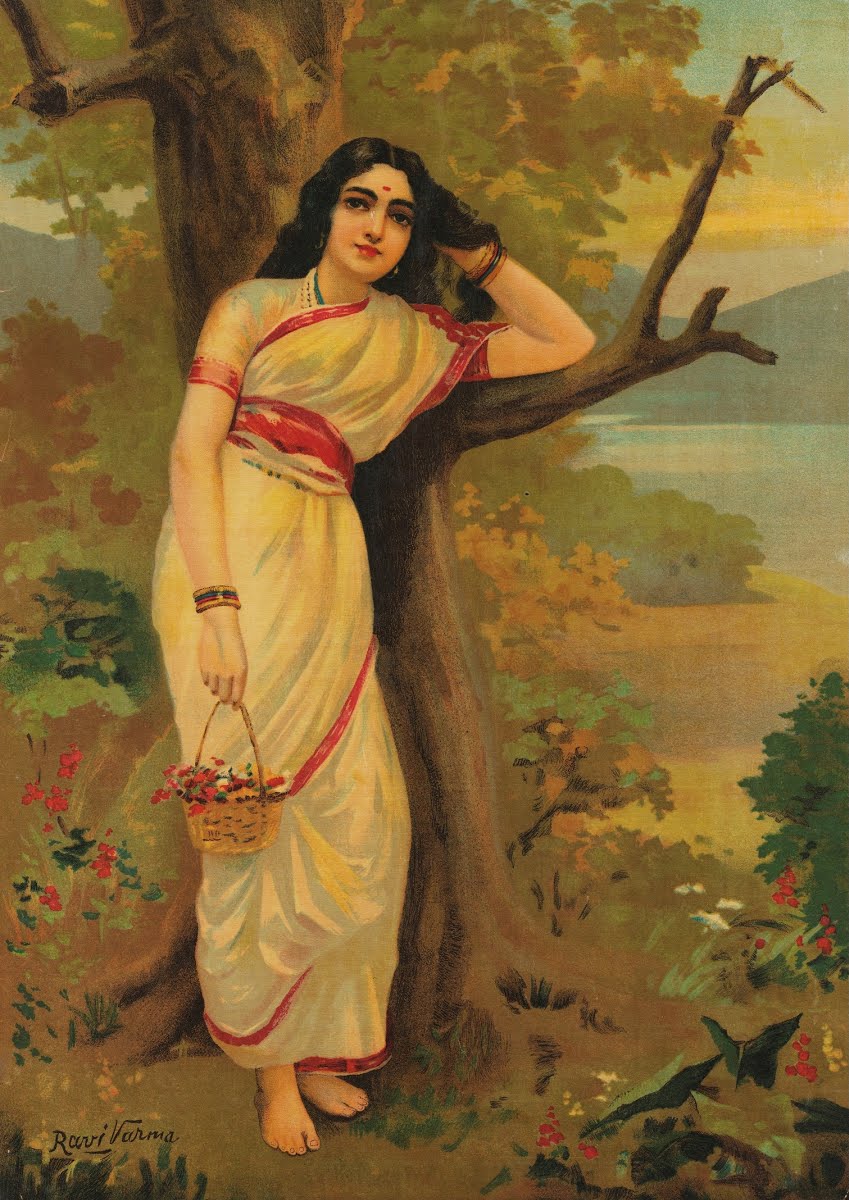 |
AHALYA
Ahalya was an
incredibly beautiful lady, and many were the
suitors who sought her hand in marriage.
Ahalya’s father had. However, vowed he would
marry her to the man who could circumumbulate
the Earth in a short span of time. On hearing
this, men and Gods began a race around the
world. Meanwhile, Gautama, a leared and austere
man, circled round a cow giving birth to a calf.
This confered him as much religious credit as
one would get by travelling around the world.
Thus, Ahalya was rightfully married to Gautama.
However, Indra, among many Gods, returned to
find to this utter dismay that he was depreived
of his reward. Unsatisfied, he disguised himself
as Gautama and passed the night with the
beautiful Ahalya while Gautama was away. When
Gautama returned the next morning, he found
Indra in possession of his wife and house.
Enraged, he cursed Indra with the penalty of
having a thousand holes in his body, and for
Ahalya to be stratified into a rock. Ahalya’s
curse was put to an end only when she was
touched by Rama’s feet. |
|
BREAKING OF SHIVA’S BOW
King Janaka, the father of Sita, vowed that he
would marry Sita only to a man who could break
Shiva’s bow, and thus achieve the impossible.
Many suitors, inclusding Ravana, were unable to
achieve this feat. Howerer, Rama, son of
Dasharatha, broke into two the bow of Shiva and
won her hand in marriage. The above picture
depicts the actual nuptial marriage scene of
Rama and Sita subsequesnt to the breaking of the
bow. |
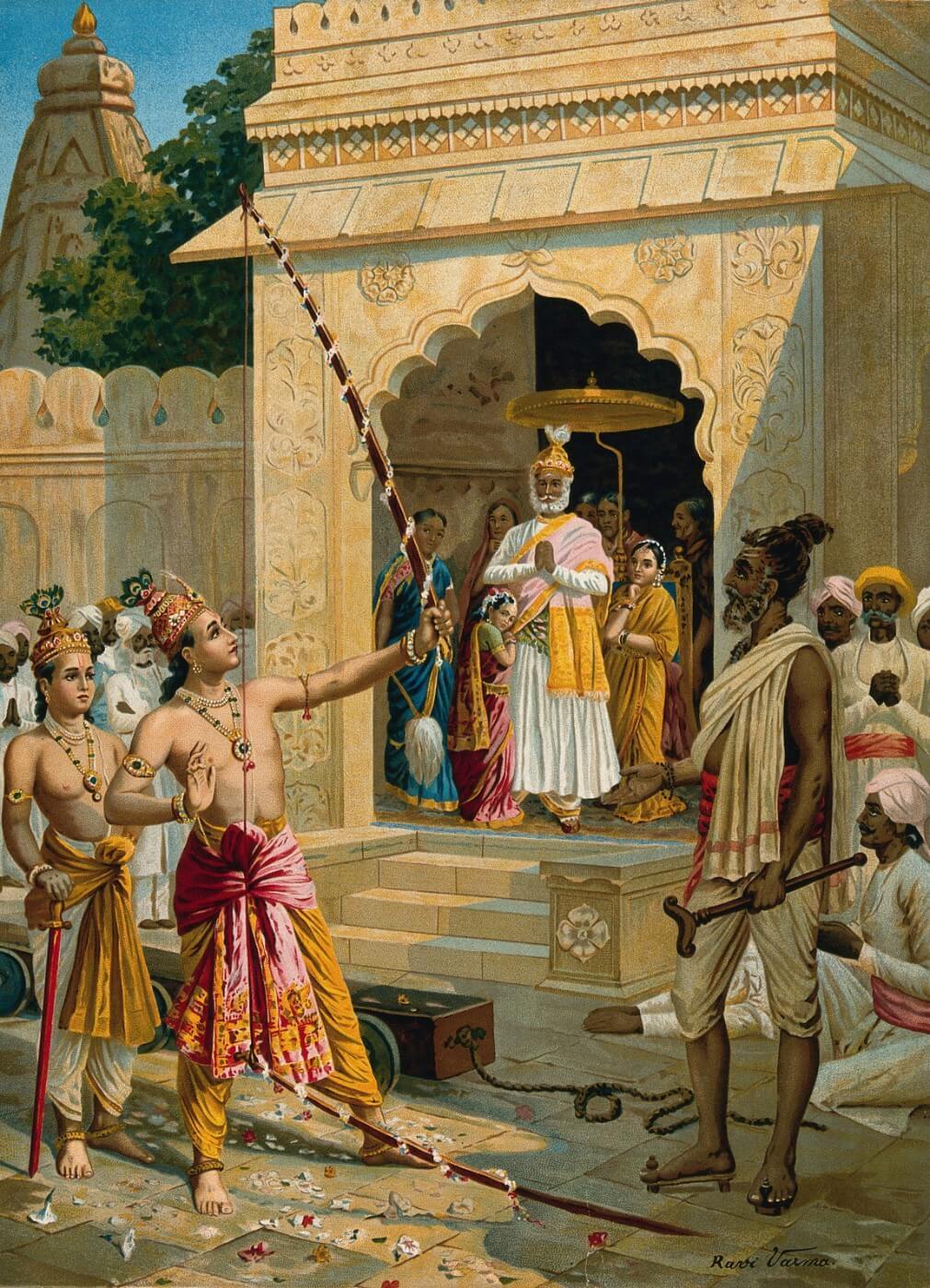 |
|
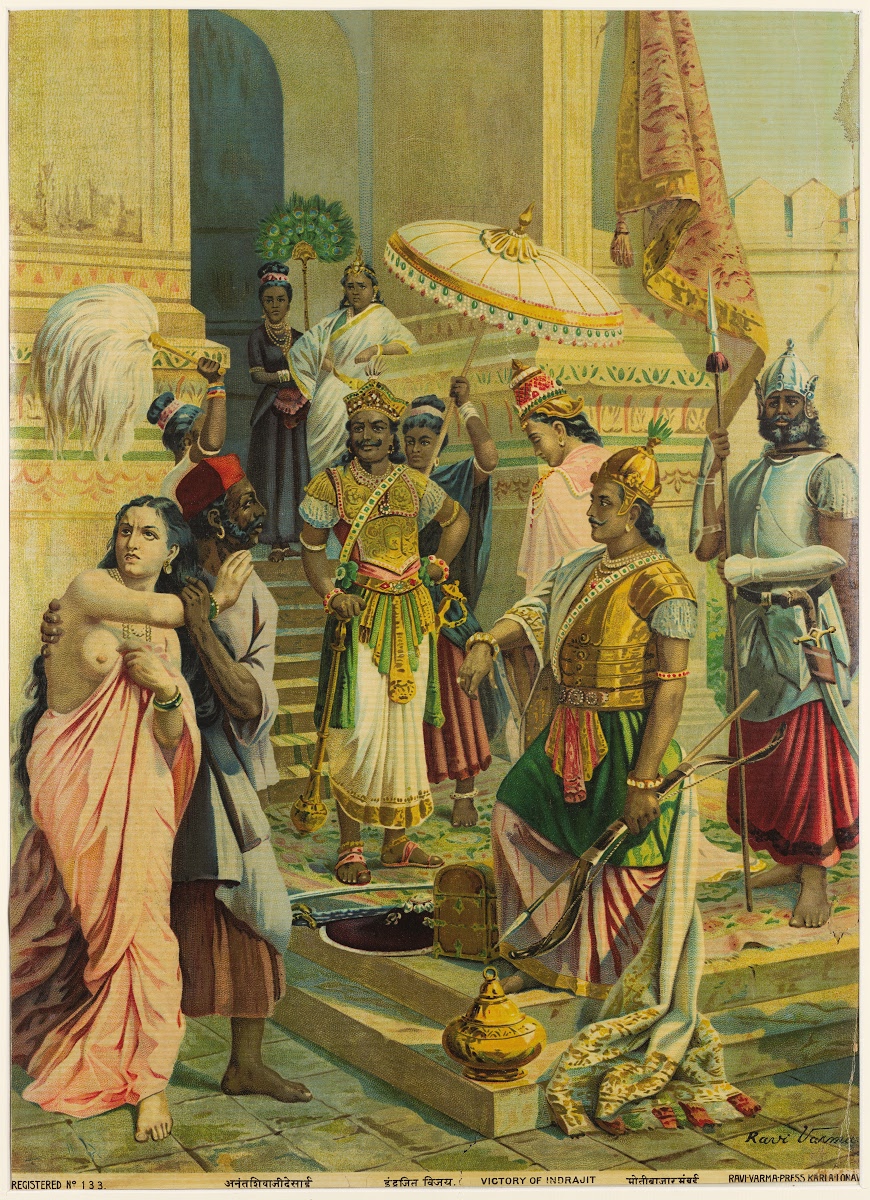 |
THE TRIUMPH OF INDRAJIT
Indrajit, son of Ravana, defeated Indra, the
king of the Gods. In the above picture, Indrajit
is seated on Indra’s throne, under his umbrella.
Indra’s wife, Sachi, now a captive slave, is
being dragged before him. |
|
THE LOPPING OFF OF JATAYU’S WING
When Ravana kidnapped Sita, he drove away to
Lanka in his mighty chariot. Jatayu, a powerful
bird, was a friend to Rama and pounced upon
Ravana’s chariot, breaking it into pieces.
Jatayu was almost successful in rescuing Sita.
However, in an unguarded moment, he accidentally
revealed to Ravana that his invincibility lay in
his strong wings. Ravana at once lopped off his
wings one after the other. Sita, unable to
witness the woeful plight of her friend, covered
her eyes with her hands to hide her sorrows. |
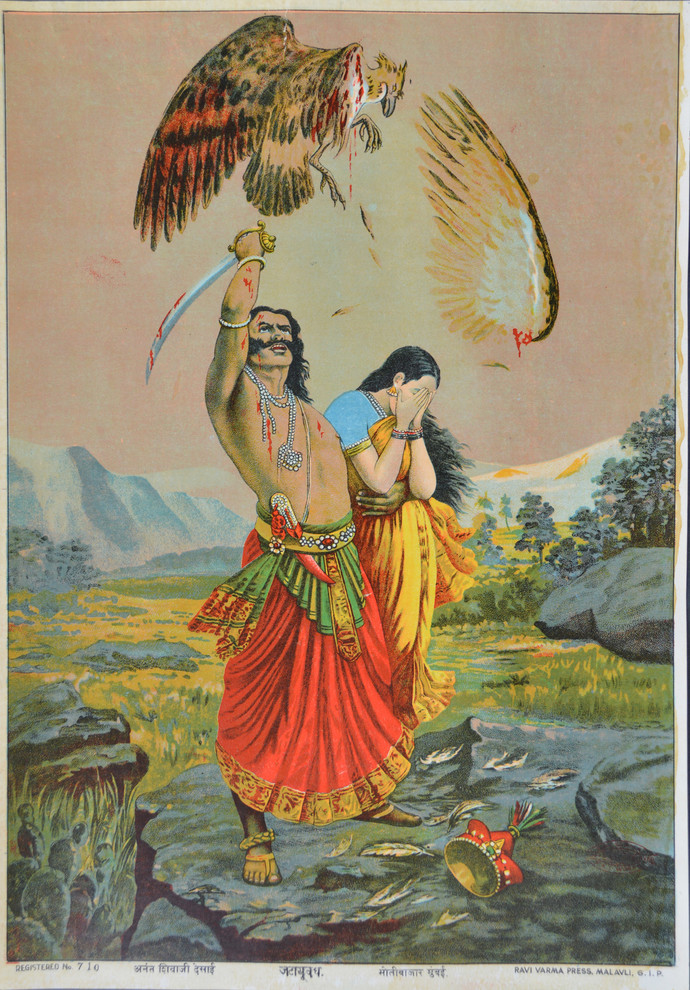 |
| |
|
| |
|
|
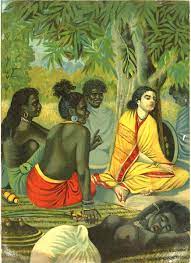 |
SITA IN THE ASHOKA FOREST
When Ravana took Sita to Lanka, he kept her in
an Ashoka forest with a group of ugly and
fearsome ogresse keeping watch. The above
picture represents this part of Sita’s exile. |
|
MEETING WITH BHARAT
Rama was sent into 14 years of exile by his step
mother Kaikeyi. Bharat, the son of Kaikeyi, was,
however, very fong of Rama. The above picture
represents the meeting of the brothers Rama and
Bharat after Rama’s exile. |
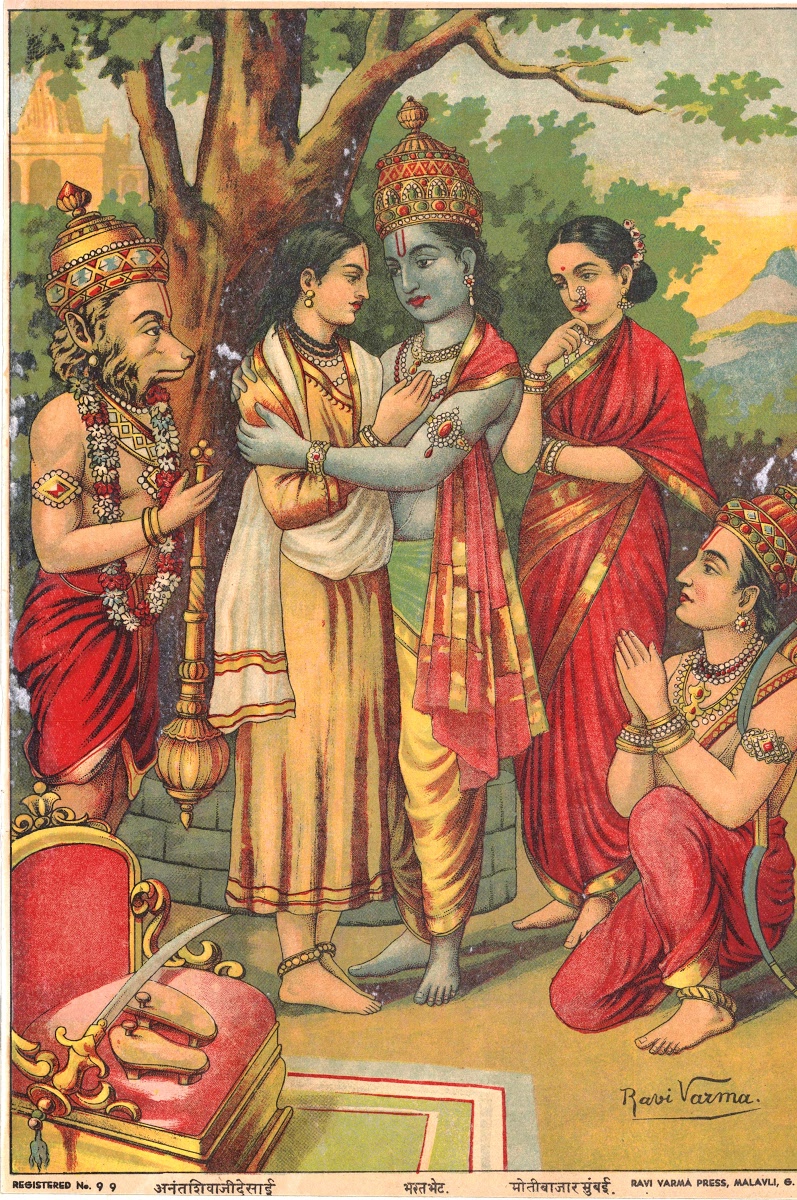 |
| |
|
| |
|
| |
|
|
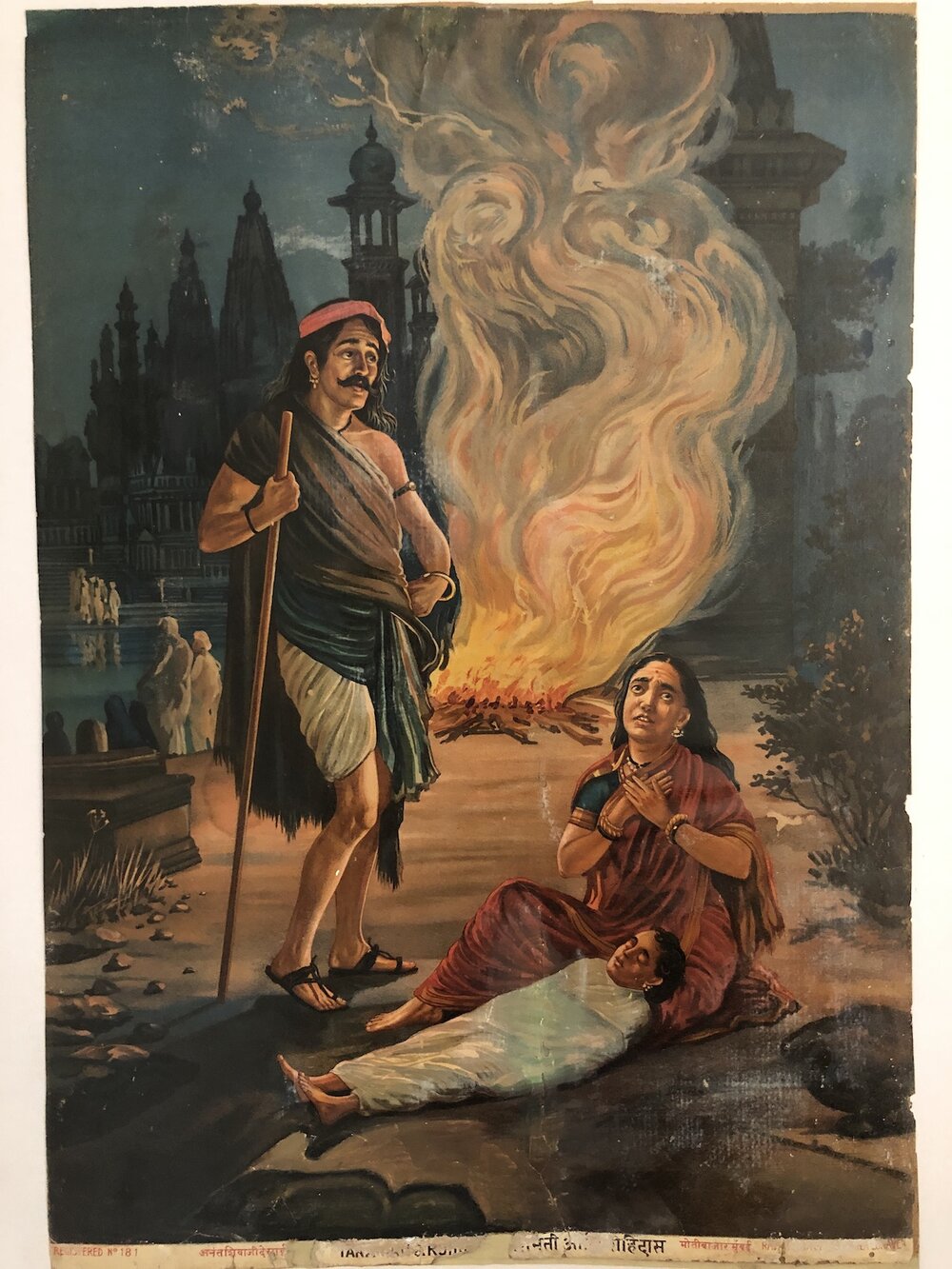 |
HARISHCHANDRA
The life of Harishchandra is the crowning piece
of Indian tragedy. Harishchandra was a disciple
of Sage Vasistha, who once remarked that
Harishchandra would always remain true to his
word and would put honour before life. Sage
Vishwamitra, Vasistha’s mortal enemy, pledged
that he would someday persecute Harishchandra so
brutally that he will have to consider himself
defeated. One night, Harishchandra dreamt that
he surrendered all his possessions, including
his kingdom, to Sage Vishwamitra. On the
following day, Vishwamitra demanded possession
of the gift. Harishchandra, true to his word
given in a dream, made over his kingdom to
Vishwamitra. Vishwamitra banished King
Harishchandra, Queen Taramati and their son
Rohidas to Kashi, much beyond the borders of
their kingdom, and demanded Dakshina.
Harishchandra, his wife, and his son, were made
to work for different masters. Harishchandra
became the bond-slave of a Dom , the lowest
outcaste known to Hindu society. The Dom
ill-treated Harishchandra, and asked him to keep
watch on burning ground in the dead of the night
and to attend to the proper cremation of the
dead bodies. Now it so happened that Rohidas was
bitten by a snake while plucking flowers in a
garden, leading to his death. Taramati, the
former queen of Harishchandra, came to the
cremation ground to set fire to the dead body of
her child. There she met her royal husband, now
doomed to duty as a charnel
horseman. |
|
MALADASA AND RUTHUDWAJ
Maladasa was the daughter of a Gandharva and was
uncommonly lovely. She was kidnapped by a
Rakshasa or a ferocious barbaric chieftainwho
kept her shut up in a garden house. The Rakshasa
was also in the the habit of unnecessarily
annoying Rishis or hermits who were practicing
religious austerities in their hermitages. These
Rishis summoned King Ruthudwaj to red themselves
of the tormention of the Rakshasa(demon)
Ritudhavaj did as he was requested and killing
the demon liberated the fair Madalasa from her
captivity. This picture represents the first
meeting of Madalasa with her liberator. She
became the favourite queen of Ruthudwaj who had
four sons by her. |
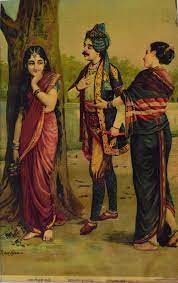 |
|
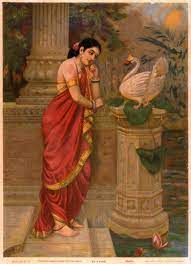 |
DAMAYANTI AND HANSA
Damayanti was the daughter of Raja Bhimaka of
the Berars. She was so beautiful that even the
Gods were desirous of securing her hand in
marriage. However, she oved raja Nala, the king
of the Nishadhas. Nala did not know that she
loved him. She despatched a Hansa(royal goose)
to ascertain the state of Damayanti’s feelings
towards himself. The Hansa goes to Damayanti’s
pleasure garden where she catches him. In the
picture she is represented as talking to the
Hansa who is communicating to her the gladsome
information that Nala is as deeply in love with
her as she evidently with him. |
|
DAMAYANTI NO. 2
(In a condition of
love-separation). Though Nala and Damayanti
loved each other, the course of their love did
not run smoothly. In the picture, Damayanti is
shown pining for her lover’s company. |
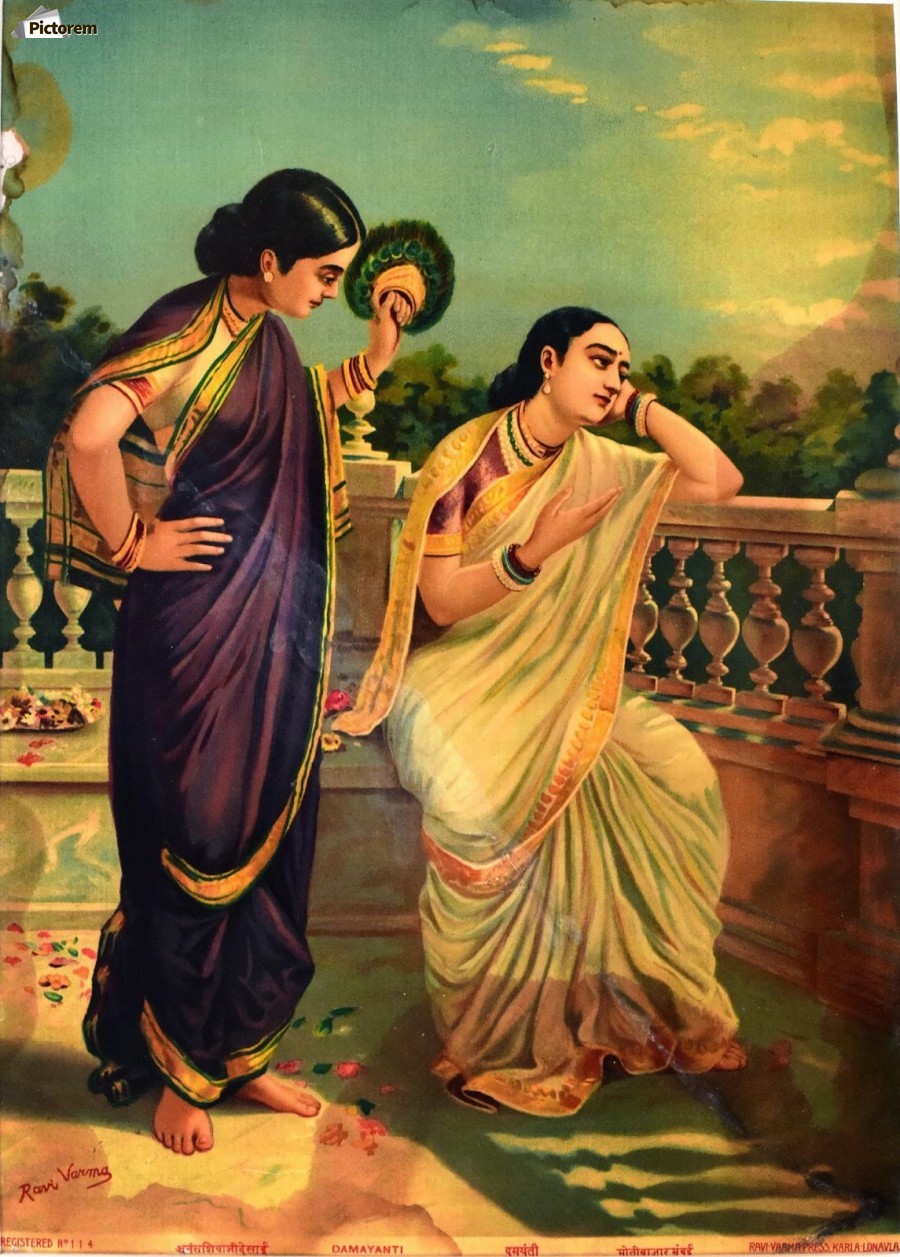 |
|
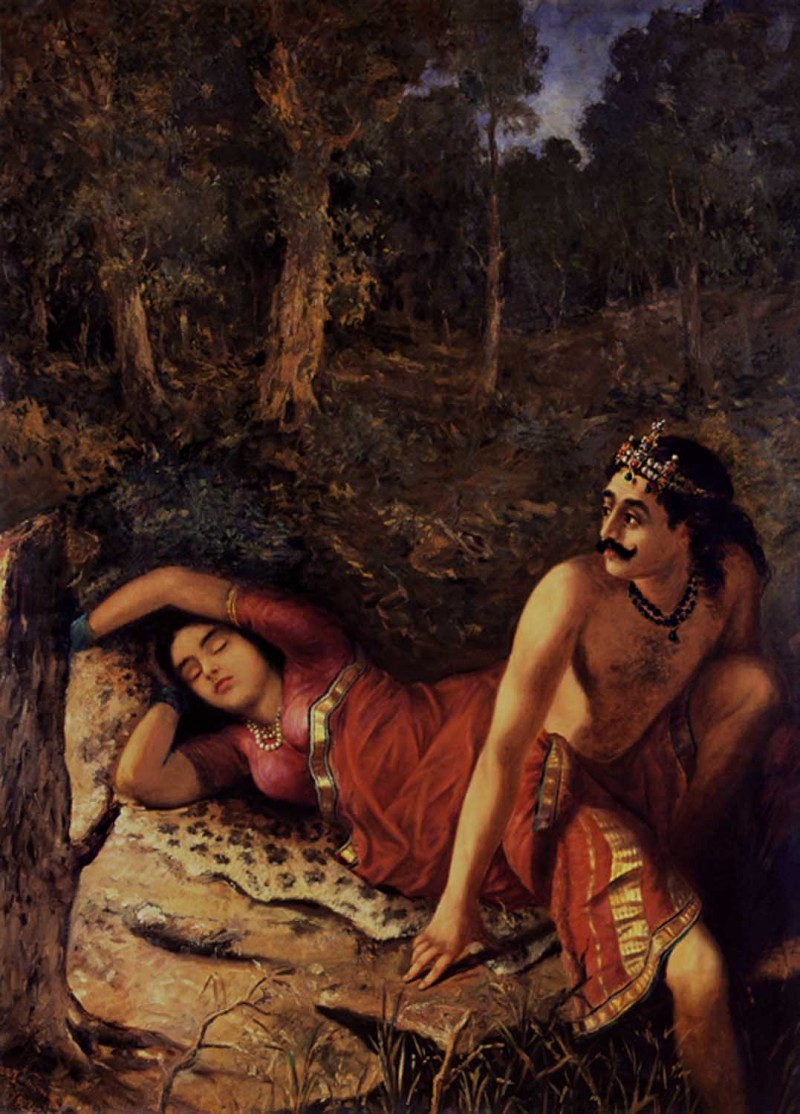 |
NALA AND DAMAYANTI
After Nala and Damayanti wed, they were banished
from their kingdom by Kali. In their exile in a
wilderness, Nala abandons Damayanti while she is
fast asleep. |
|
DAMAYANTI NO. 4
Damayanti woke up and found that she was left
all alone in the forest. She then gave vent to
inexpressible grief and sorrow. |
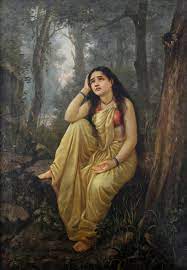 |
| |
|
|
OLEOGRAPH SIZE: 10" x 14"
Shri Shankar (S. S. Bribasi)
Dattatray (Raja Ravi Varma)
Vishnu Sheshshai (Raja Ravi
Varma)
Dashbhuja Hanuman (Unknown,
Ravi Varma Press)
Ganapati (Raja Ravi Varma)
Tridev (Unknown, Ravi Varma
Press)
Yama (Raja Ravi Varma)
Ram Family (Unknown, Ravi
Varma Press)
Laxmi (Raja Ravi Varma)
Sarswati (Raja Ravi Varma)
Satynarayan Pujan (Unknown,
Ravi Varma Press)
Vishnu Garudvahan (Raja Ravi
Varma)
Indrajit (Raja Ravi Varma)
Krishna Yamunavihar (Unknown,
Ravi Varma Press)
Krishna Parvat (Unknown, Ravi
Varma Press)
Murlidhar (Raja Ravi Varma)
Suryadev (Unknown, Ravi Varma
Press)
Makhanchor (Raja Ravi Varma)
Jalbatau Rani (Unknown, Ravi
Varma Press)
Vishnu (Raja Ravi Varma)
Shrinathji (Unknown, Ravi
Varma Press)
Shivaji (Raja Ravi Varma)
Panchkanya (Raja Ravi Varma)
Sita Swayanvar (Raja Ravi
Varma)
Usha (Raja Ravi Varma)
Ram Panchayatan (Raja Ravi
Varma)
Ushas Dream (Raja Ravi Varma) |
OLEOGRAPH SIZE: 14" x 20"
Shivaji (Raja Ravi Varma)
Shakuntala Patralekhan (Raja
Ravi Varma)
Ahilya (Raja Ravi Varma)
Arjun Subhadra (Raja Ravi
Varma)
Radha Vilas (Raja Ravi Varma)
Sarswati (Raja Ravi Varma)
Urvashi (Raja Ravi Varma)
Markandeya (Raja Ravi Varma)
Krishna Sakhi (Raja Ravi
Varma)
Shankar (Raja Ravi Varma)
Raas Krida (Vasudeo H Pandya)
Rangpanchami (Vasudeo H
Pandya)
Hansa Damayanti (Raja Ravi
Varma)
Vishmamitra Menaka (Raja Ravi
Varma)
Ram Rajyabhishek (M. V.
Dhurandhar)
Vishu Garudvahan (Raja Ravi
Varma)
Mohini (Raja Ravi Varma)
Gopinchi Gahani (Raja Ravi
Varma)
Mattsygandha Vivah (Raja Ravi
Varma)
Arjun Sairandhri (Raja Ravi
Varma)
Vasantika (Raja Ravi Varma)
Chitralekha (Raja Ravi Varma) |
|
OLEOGRAPH SIZE: 20" x 28"
Shiv Panchayatan (Raja Ravi
Varma)
Vishnu Garudvahan (Raja Ravi
Varma)
Ganga Avataran (Raja Ravi
Varma)
Krishna
Shishtai (Raja Ravi Varma)
Shivaji (Raja Ravi Varma)
Laxmi (Raja Ravi Varma)
Shakuntala Janma (Raja Ravi
Varma) |
|
|
|
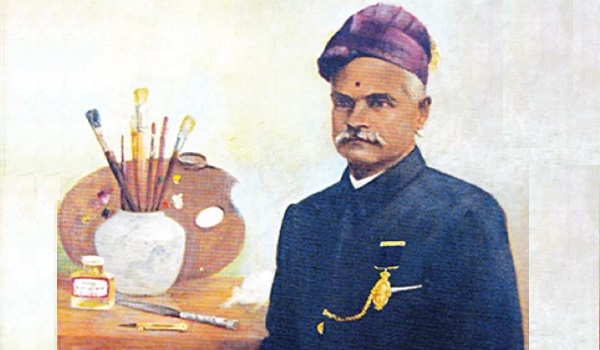
Date of Birth: April
29, 1848
Date of Death: October
2, 1906
|
Place of Birth: Kilimanoor,
Travancore
Place of Death: Attingal,
Travancore
Profession: Painter,
artist
Spouse: Pooruruttati
Nal Bhageerathi Bayi Thampuratty
Children: Kerala
Varma, Cheria Kochamma, Uma Amma, Mahaprabha
Amma, Rama Varma
Father: Ezhumavil
Neelakanthan Bhattatiripad
Mother: Umayamba
Bayi Thampuratty
Awards: Kaisar-i-Hind
Gold Medal (1904) |
Google MAP!
|
